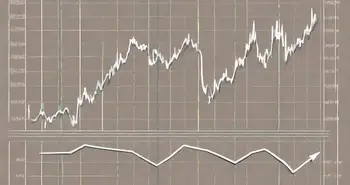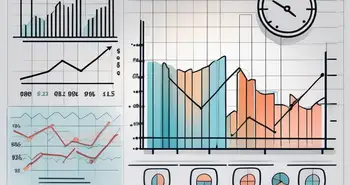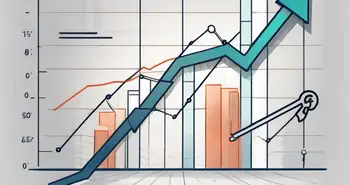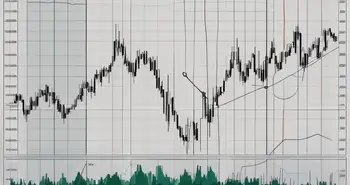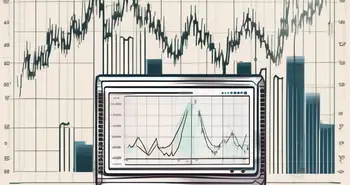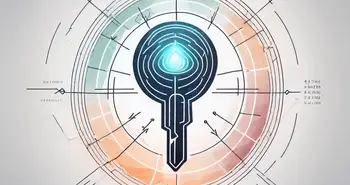The Ultimate Guide to Price Channels
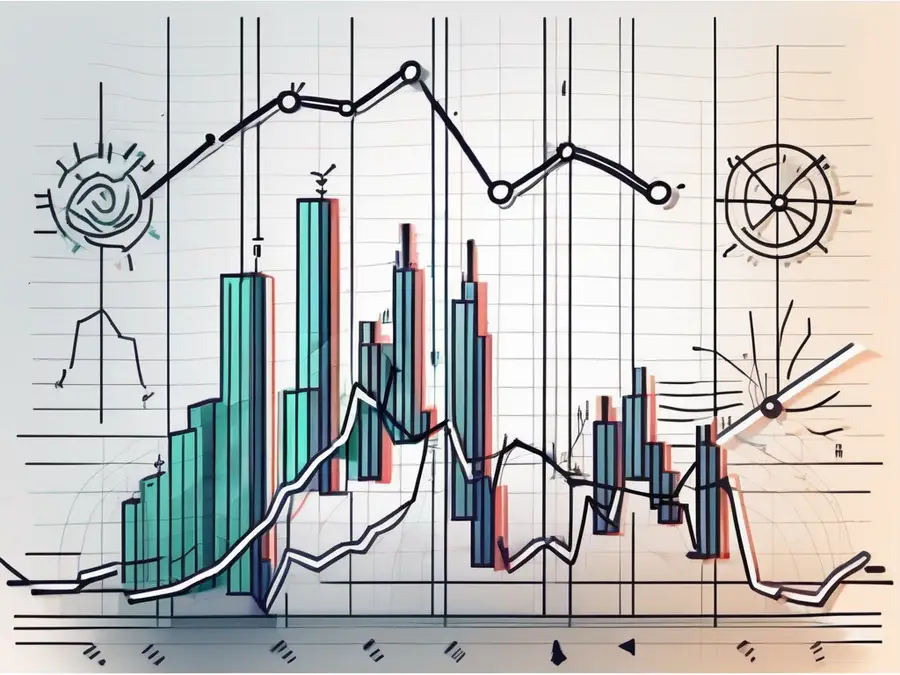
Price channels are powerful tools that can help traders identify potential entry and exit points in the financial markets. Understanding how price channels work and how to effectively use them can greatly enhance your trading strategy. In this article, I will provide you with a comprehensive guide to price channels, covering everything from their definition and importance to different types, identification techniques, trading strategies, and common mistakes to avoid. So, let's dive in and explore the fascinating world of price channels!
Understanding Price Channels
Before we delve deeper into price channels, let's start by understanding what they are and why they are essential in technical analysis. Price channels are visual representations of the range in which an asset's price moves over a given period. They consist of two parallel lines, with the upper line representing the resistance level and the lower line acting as the support level. The space between these lines is where price typically fluctuates.
Price channels are invaluable tools for traders as they provide insights into the market trend, volatility, and potential price reversals. They help identify when an asset is in an uptrend, downtrend, or consolidating phase, enabling traders to make informed decisions.
When analyzing price channels, there are several key components to consider:
Trendlines
The upper (resistance) and lower (support) lines that form the channel are known as trendlines. These lines are drawn by connecting the swing highs and swing lows of the price action. The resistance line represents the level at which selling pressure tends to outweigh buying pressure, causing the price to reverse or consolidate. On the other hand, the support line indicates the level at which buying pressure tends to outweigh selling pressure, leading to a potential price bounce or consolidation.
Channel Width
The distance between the trendlines represents the channel width, which is a crucial factor in price channel analysis. A wider channel indicates higher volatility, with larger price swings between the support and resistance levels. Conversely, a narrower channel suggests lower volatility, with smaller price movements within the channel. Traders often use the channel width to assess the potential profit targets and stop-loss levels for their trades.
Channel Duration
The timeframe over which the channel is formed is known as the channel duration. This duration can vary depending on the trader's preference and the asset being analyzed. Some traders may focus on short-term channels that form within days or weeks, while others may analyze long-term channels that span months or even years. Understanding the channel duration helps traders determine the significance and reliability of the price channel in predicting future price movements.
By considering these key components of price channels, traders can gain a comprehensive understanding of the market dynamics and make more informed trading decisions. Price channels provide valuable insights into market trends, volatility, and potential reversals, allowing traders to identify profitable opportunities and manage risks effectively.
Types of Price Channels
When it comes to analyzing price movements in financial markets, price channels play a significant role. They provide traders with valuable insights into the direction and strength of trends. There are three main types of price channels, each with its own characteristics and implications.
Ascending Price Channels
An ascending price channel occurs when both the support and resistance lines slope upwards. This indicates an uptrend, where the asset's price is consistently making higher highs and higher lows. Traders often look for buying opportunities when the price bounces off the support line.
Within an ascending price channel, there is a sense of optimism among market participants. As the price continues to climb, it suggests that buyers are in control, driving the market higher. This can be attributed to various factors such as positive news, strong earnings reports, or favorable economic conditions.
Traders who identify an ascending price channel may consider adopting a bullish stance, anticipating further price appreciation. They may look for confirmation signals, such as breakouts above previous resistance levels or bullish candlestick patterns, to enter long positions. Additionally, they may set profit targets based on the width of the channel or use trailing stop-loss orders to protect their gains.
Descending Price Channels
A descending price channel is the opposite of an ascending channel. Here, both the support and resistance lines slope downwards, indicating a downtrend. Traders may consider short-selling opportunities when the price approaches the resistance line.
Within a descending price channel, there is a prevailing sense of pessimism among market participants. As the price continues to decline, it suggests that sellers are in control, exerting downward pressure on the market. This can be influenced by factors such as negative news, weak earnings reports, or unfavorable economic conditions.
Traders who identify a descending price channel may consider adopting a bearish stance, expecting further price depreciation. They may look for confirmation signals, such as breakouts below previous support levels or bearish candlestick patterns, to enter short positions. Additionally, they may set profit targets based on the width of the channel or use trailing stop-loss orders to manage their risk.
Horizontal Price Channels
In a horizontal price channel, both the support and resistance lines are parallel and remain relatively flat. This indicates a period of consolidation, where the price is range-bound. Traders may choose to go long when the price reaches the support line and short when it nears the resistance line.
Within a horizontal price channel, there is a lack of clear direction in the market. The price oscillates between the support and resistance levels, reflecting a balance between buyers and sellers. This can occur during periods of market indecision, economic uncertainty, or when traders are awaiting significant news or events.
Traders who identify a horizontal price channel may consider adopting a range-trading strategy, taking advantage of the price swings between support and resistance. They may look for reversal signals, such as bullish or bearish candlestick patterns, at the boundaries of the channel to initiate trades. Additionally, they may set profit targets based on the width of the channel or use stop-loss orders to manage their risk in case of a breakout.
Understanding the different types of price channels is essential for traders as it helps them make informed decisions based on the prevailing market conditions. By analyzing price channels, traders can identify potential trading opportunities and develop strategies that align with their risk tolerance and trading style.
How to Identify Price Channels
Now that we have familiarized ourselves with the types of price channels, it's time to explore some tools and techniques to identify them accurately:
Tools for Identifying Price Channels
There are several tools available to traders for identifying price channels, such as trendlines, moving averages, and Bollinger Bands. Trendlines are perhaps the simplest and most widely used tool. By connecting swing highs and lows, you can draw trendlines that delineate the price channel.
Recognizing Patterns in Price Channels
In addition to using tools, it's essential to recognize patterns within price channels. Look for price consolidations, breakouts, and trend reversals. Understanding these patterns can help you anticipate market movements and make better trading decisions.
Trading Strategies Using Price Channels
Now that you know how to identify price channels, let's explore some popular trading strategies:
Breakout Trading Strategy
A breakout trading strategy involves entering a trade when the price breaks out of the channel. Traders often wait for a significant breakout, accompanied by high trading volumes, to confirm the validity of the breakout signal.
Reversal Trading Strategy
A reversal trading strategy involves identifying potential trend reversals within the price channel. Traders watch for price patterns, such as double tops or bottoms, and wait for confirmation before entering a trade in the opposite direction.
Common Mistakes in Price Channel Trading
While price channels can be powerful tools, it's important to avoid common pitfalls that can hinder your trading success:
Avoiding Overreliance on Price Channels
Price channels are just one component of a comprehensive trading strategy. Overreliance on price channels without considering other factors, such as market news or fundamental analysis, can lead to poor decision-making. Use price channels in conjunction with other tools and indicators to increase the probability of successful trades.
Misinterpreting Price Channel Signals
Interpreting price channel signals requires experience and practice. Traders often make the mistake of entering trades solely based on the price touching a channel's support or resistance lines. It's important to consider the broader market context, candlestick patterns, and other technical indicators to validate signals.
Remember, becoming proficient in using price channels takes time and practice. Don't be discouraged by initial setbacks. Keep refining your strategy and continuously learn from each trade you make.
As an experienced trader myself, I would like to share a personal piece of advice. Always stay disciplined and stick to your predefined trading plan. Emotions can cloud judgment, leading to impulsive decisions. Trust your analysis and strategy, and don't let short-term market fluctuations shake your confidence.
Frequently Asked Questions (FAQ)
What are price channels?
Price channels are visual representations of the range in which an asset's price moves over a given period. They consist of two parallel lines, with the upper line representing the resistance level and the lower line acting as the support level.
What is the importance of price channels?
Price channels are crucial for traders as they provide insights into market trends, volatility, and potential price reversals. They help identify when an asset is in an uptrend, downtrend, or consolidating phase, enabling traders to make informed decisions.
How do I identify price channels?
Price channels can be identified using tools such as trendlines, moving averages, and Bollinger Bands. However, it's essential to recognize patterns within price channels and understand their significance in market movements.
What are some common trading strategies using price channels?
Two common trading strategies using price channels are breakout trading and reversal trading. Breakout trading involves entering a trade when the price breaks out of the channel, while reversal trading focuses on identifying potential trend reversals within the price channel.
What are the common mistakes to avoid in price channel trading?
Two common mistakes to avoid in price channel trading are overreliance on price channels and misinterpreting price channel signals. It's important to use price channels as part of a comprehensive trading strategy and consider other factors and indicators for well-informed decision-making.
With a solid understanding of price channels and the ability to effectively use them, you'll be equipped with a valuable toolset for successful trading. Remember to stay disciplined, continuously learn, and adapt your strategy to changing market conditions. Happy trading!
Ready to put your knowledge of price channels to the test? Join Morpher, the revolutionary trading platform that's changing the game with blockchain technology. With Morpher, you can trade a variety of assets, from stocks and cryptocurrencies to unique markets like NFTs and sneakers, all with zero fees and infinite liquidity. Embrace the power of fractional investing, short selling without interest fees, and up to 10x leverage to maximize your trades. Plus, enjoy the safety of a non-custodial wallet, keeping you in full control. Experience a new era of trading with Morpher's Virtual Futures on the Ethereum Blockchain. Sign Up and Get Your Free Sign Up Bonus today, and elevate your trading strategy to new heights!

Disclaimer: All investments involve risk, and the past performance of a security, industry, sector, market, financial product, trading strategy, or individual’s trading does not guarantee future results or returns. Investors are fully responsible for any investment decisions they make. Such decisions should be based solely on an evaluation of their financial circumstances, investment objectives, risk tolerance, and liquidity needs. This post does not constitute investment advice.

Painless trading for everyone
Hundreds of markets all in one place - Apple, Bitcoin, Gold, Watches, NFTs, Sneakers and so much more.

Painless trading for everyone
Hundreds of markets all in one place - Apple, Bitcoin, Gold, Watches, NFTs, Sneakers and so much more.

